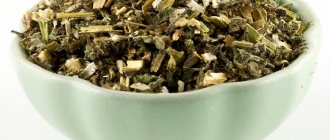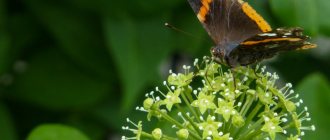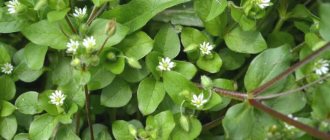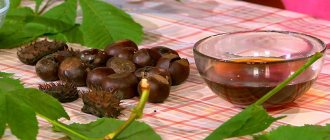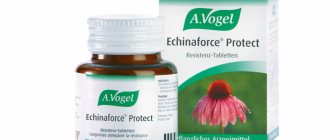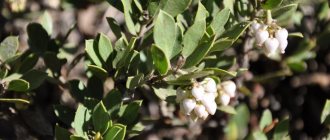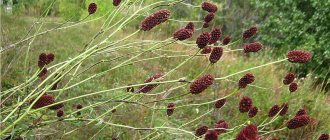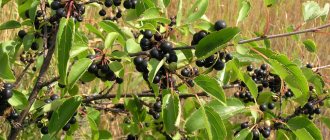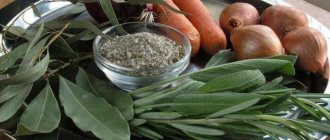Peppermint is a popular and widespread herbaceous plant with a specific odor from the Lamiaceae family. The cultivated species was obtained by hybridizing wild varieties of garden and watermint.
The plant is cultivated by gardeners everywhere, and is also grown on an industrial scale, especially in the Voronezh region and Krasnodar Territory. It is a valuable honey plant - the resulting honey has a pleasant mint aroma and an impeccable amber color. Prefers marshy areas, but is generally unpretentious to soil and germination conditions. Some gardeners consider the plant a weed.
The medicinal properties and contraindications of peppermint have been sufficiently studied for a long time. As a result, the plant is actively used in industrial pharmaceuticals and folk medicine, and is also used for deodorizing rooms, clothing and shoes, in cooking, perfumery, the food industry, etc.
Morphological description
The rhizome is horizontal, branched, with fibrous thin roots. The stem is straight, from 30 to 100 cm in height, hollow inside, and has 4 sides. The plant is characterized by a large number of lateral branches and leaves. The leaves are opposite, arranged crosswise, have an oblong-ovate shape and short petioles. The tips of the leaves are pointed, the base is heart-shaped and has a sharp-serrated edge.
The flowers are small in size, light purple in color, collected at the top in half-whorls, from which spike-shaped inflorescences are formed. Flowering occurs in the summer, from June to September. The fruit consists of 4 nuts and is formed quite rarely.
Procurement and storage of raw materials
The aerial part has medicinal value. For self-harvesting, mint leaves are most suitable, which should be collected in dry weather at the beginning of flowering.
The raw materials are dried in air, in the shade. If leaves are collected, they are dried on clean paper, if branches are collected, they can be dried with awnings. Mint dries well and quickly, after which it is placed for storage in cardboard boxes. The shelf life of dry raw materials is 2 years.
The raw materials should be crushed immediately before preparing the medicine, but not in advance, so as not to lose valuable essential oil.
How to dry mint correctly
Rinse the collected stems with cool, purified water. Even if you cut them on your site, this procedure will not be superfluous. A huge amount of dust and microbes could accumulate on soft, terry leaves.
- Place paper towels on the table and arrange the washed plants.
- Take a rack or sheet from the oven, line it with parchment paper and transfer the dried pieces.
- Place the contents in an oven preheated to 80 degrees, but leave the door slightly open.
- Dry the product for 50-70 minutes until completely cooked. You can check this by pulling out one stem - if it breaks easily, it’s time to turn off the device. Afterwards, take out the baking sheet and leave it in a ventilated place for another day, otherwise a layer of mold may form on the dried mint in a closed container. It is recommended to store the dried supplement in wrapped paper or in a glass, but opaque jar.
Also, a well-scented plant will dry naturally on the balcony without direct sunlight, however, the process will take much longer. If you don’t want to waste time on preparation, choose ready-to-eat products in the Russian Tea Company online store.
Chemical composition of peppermint
The well-known smell of mint is nothing more than an essential oil, which the plant is very rich in. Oil is a transparent liquid with a greenish or yellowish tint, a pleasant fresh taste and aroma. The content of essential oil varies in different parts of the plant: leaves contain 2.5-4.5% essential oil, inflorescences - 4-6% liquid, and stems - up to 0.3%. The more favorable the growing conditions, the greater the amount of essential oil the plant contains. The composition of the essential oil is represented by menthol, menthol esters (valeric and acetic acids), alpha-pinene, pulegone, cineole, dipentene, beta-phellandrene and other terpenoids.
Fresh leaves also contain tannins and resins, organic acids, betaine, carotene, trace elements, hesperidin, bitterness, vitamins, neutral saponins, glucose and other substances.
So, 100 grams of fresh leaves of the plant contain:
- 70 kilocalories;
- 78.7 gr. water;
- 14.9 gr. carbohydrates;
- 8 gr. fiber;
- 3.8 gr. proteins;
- 0.9 gr. fats;
- 0.2 gr. saturated fatty acids;
- 570 mg potassium;
- 80 mg magnesium;
- 30 mg sodium;
- 75 mg phosphorus;
- 243 mg calcium;
- 5 mg iron;
- 30 mg vit. WITH;
- 1.7 mg vit. AT 3;
- 0.3 mg vit. B2 and B5;
- 0.1 mg vit. B1 and B6.
Growing
Peppermint is a hybrid between watermint and spearmint . Confirmation of its hybrid origin is the fact that mint flowers are almost sterile. If seeds are produced, they produce plants that are not similar to the mother plant.
The plant is moisture-loving, demanding of light and soil. With long days it develops quickly. Cultivated peat bogs, sandy loam and loamy soils with sufficient humus and moisture content are suitable for cultivation. The best precursors are perennial herbs, root vegetables, legumes and vegetables, as well as potatoes.
The best soils for growing peppermint are loams and sandy loams with clay subsoil. Responds well to fertilizer. Demanding on lighting conditions: in shady places the percentage and quality of essential oil are reduced. Not demanding on heat. Easily tolerates spring frosts down to -8°. During the growing season it requires a lot of moisture, but in the budding and flowering phases (July - August) excess moisture negatively affects the quality of the essential oil.
Before planting mint in the fall, dig up the soil to a depth of 25-30 cm and add manure at the rate of 3-4 kg per 1 m2. In early spring, the area is cultivated to a depth of 8-10 cm, raked into two or three tracks, furrows 6-12 cm deep are cut, watered and the rhizomes are laid on the wet bottom in one continuous line. The row spacing is 45-60 cm. You can also use the square-cluster method (60 x 60 or 45 x 45 cm). In this case, four to five pieces of rhizomes are placed in each nest. 4-5 kg of humus and 1-1.5 g of phosphorus per 1 m2 are added to the rows and nests. The soil is well rolled after planting.
Perennial specimens in our conditions grow in the first or second ten days of April. Budding begins in the first or second decade of July, flowering begins in late July - early August. Blooms until early October. The fruits do not set. The growing season ends in the third ten days of October.
Peppermint Mentha piperita L.
Reproduction
They are propagated mainly vegetatively, less often by seeds.
Planting mint in the ground is carried out in spring or autumn. Placed on fertile, well-cultivated soils. Applying fresh manure is not recommended. Excess nitrogen fertilizers lead to increased plant growth and a decrease in essential oil.
During vegetative propagation, plants are more uniform in morphological characteristics and essential oil content. Vegetative propagation of mint includes several methods: stem cuttings, cuttings at least 15 cm long, pruning freshly dug roots, dividing rhizomes, propagation by layering (creeping above-ground shoots). Stem cuttings are rooted in sand in the summer in order to obtain good planting material by autumn.
With the seed propagation method, seedlings are first grown. Sow in March in seed boxes in a greenhouse or greenhouse; the seeds are not covered with soil. Seedlings dive into greenhouses or ridges.
Spring planting begins early, when the soil is still saturated with moisture.
The planting method is single-row with row spacing of 50-60 cm, between plants - 20-30 cm. On heavier loamy soils, it is recommended to plant on ridges in a three-line method, the distance between lines is 30 cm.
Planting depth is 8 - 10 cm. Mineral fertilizers are applied per 1 ha: ammonium nitrate 1.2 - 1.5 c, superphosphate 3 - 4 c, potassium salt 1.2 - 1.5 c. During the growing season, two feedings are given, consisting of 0.5 - 0.8 c of ammonium nitrate, 1.5 c of superphosphate and 0.5 - 0.6 c of potassium salt per 1 ha. Mint can grow in one place for 5 - 6 years.
Cleaning, drying and storage
In the first year of life, plant care consists of loosening the rows and weeding.
Further care of the plants consists of loosening the rows and weeding. A plot of mint that goes over to the next year is dug up in the fall to a depth of 15 cm, humus or ammonium nitrate and superphosphate are added.
Young plants do not tolerate temperature drops to 7...8°C.
Leaf harvesting begins in the second year at the beginning of flowering. In total, 2-3 cuttings are made during the growing season (depending on plant growth). After cutting, the plants are fed with complete mineral fertilizer at the rate of: ammonium nitrate 0.75-1 c, superphosphate - 1-1.5 c, potassium salt 0.5-0.8 c per 1 ha, followed by loosening the row spacing. In autumn, it is annually recommended to apply 15 - 20 tons of humus per 1 hectare. Mint is cultivated in one place for 3-4 years, and in more fertile areas for 4-5 years.
Cut close to the ground. First, it is dried on the site, and then dried under a canopy (in the shade).
Store in paper bags in a dry place at a temperature of 10 - 15°.
Diseases, pests and control measures
The plant is affected by a fungal disease - rust, especially in wet years and with an excess of nitrogen nutrition. Plants are sprayed against leaf rust with a 2% solution of copper sulfate.
Plant pest
Mint leaf beetle. Trap vessels are installed against mint pests. Control measures. Destruction of plant residues.
Description Peppermint
Medicinal properties of mint
The plant is used for a number of diseases. A huge contribution to the study of the properties of mint was once made by the British, who, through a series of experiments, discovered the effect of menthol on the human body. Upon contact with skin or mucous membranes, menthol causes irritation of cold receptors, stimulates the narrowing of superficially located vessels and the reflex dilation of blood vessels that nourish internal organs. It is this effect and a mild local anesthetic effect that is used in the relief of angina attacks (the well-known drug validol).
Mint preparations have the following therapeutic effects:
- soothing;
- vasodilator;
- sedative;
- painkiller;
- antiemetic;
- antiseptic;
- anti-inflammatory;
- improves digestion and appetite;
- antispasmodic;
- carminative;
- diuretic;
- choleretic;
- anticancer.
The scope of mint is wide - it is used to treat diseases:
- viral and bacterial nature, occurring as acute respiratory infections: tonsillitis, pharyngitis, bronchitis, bronchospasm, rhinitis, as well as tuberculosis;
- cardiovascular system: hypertension, angina pectoris, circulatory failure, coronary vascular spasm. Also used for heart palpitations;
- nervous system: insomnia, depression, nervous agitation, stress, migraines, decreased attention and memory;
- digestive system: nausea, vomiting, spasmodic pain, colic, flatulence, poor appetite, hepatitis, gastritis, incl. caused by H. Pylori, cystitis, cholecystitis, salmonellosis, cholelithiasis, urolithiasis, irritable bowel syndrome, helminthic infestation, oral diseases;
- skin and mucous membranes: itching, rash, including herpetic nature, dermatitis, burns, acne, pimples, dandruff, insect bites, sweating, increased oily skin, enlarged pores and wrinkles;
- female genitalia: heavy menstruation, manifestations of menopause;
- pain syndrome: toothache and headache, spasm of smooth muscles, myalgia, bruises, sprains, neuralgia.
For preventive purposes, the anti-carcinogenic effect of mint is actively used, especially pronounced in the prevention of cancer of the skin, colon, pancreas, liver, lungs, breast and prostate gland.
Plant preparations are used to improve the functioning of the immune system. Mint increases the resistance of body cells to long-term exposure to small doses of radiation, so it can be used in parallel with the course of treatment for cancer, as well as in cases of living in unfavorable radiological conditions.
Folk remedies for weight loss
The herb is recommended for use as part of a diet, due to its many positive properties that are important for weight loss, namely:
- increased gastric peristalsis;
- stimulation of metabolism;
- prevention of fermentation and putrefactive processes;
- antispasmodic effect on intestinal smooth muscles;
- reducing the production of the hormone cortisone, which promotes the accumulation of visceral fat.
When losing weight, smoothies or tea are prepared using mint.
In addition, wraps are periodically performed using this plant. Such procedures contribute to irritation of thermoreceptors.
Contraindications to the use of mint
- Gastric achlorhydria;
- Increased acidity of gastric juice;
- Individual intolerance to plant drugs;
- Severe allergic reactions, including to food;
- Phlebeurysm;
- Hypotension;
- Infertility, reduced ability to conceive, both in women and men;
- Severe weakness, adynamia, drowsiness;
- Children's age is up to 3 years, and for dosage forms with a high menthol content - up to 6 years.
Use for women during pregnancy and lactation
If there are no contraindications and the doctor allows the use of mint preparations, they can be used to combat the nausea that accompanies toxicosis. But mint during pregnancy should be taken in very small doses, since pregnant women often develop allergic reactions to various plants.
It is believed that mint in small quantities improves lactation, and in large quantities it suppresses it, so in moderate quantities it can also be used by nursing mothers, again, if the attending physician and pediatrician allow it. You should also ask your doctor how much mint you can drink.
A little history
The medicinal plant mint has a truly divine origin. It received its name in honor of the character of the ancient Greek myth, with whom a sad story is connected.
The goddess of Mount Mente became the concubine of Hades, the ruler of the kingdom of the dead, married to Parsephone. The love triangle, as usual, did not bring anything good. After all the ordeals, the girl was literally trampled either by her legal spouse, or by her mother - Demeter herself. The nymph turned into a tender plant with fragrant green leaves.
Mint was widely used by Arab, Chinese, and Japanese healers. Ancient healers and medieval scientists knew its medicinal properties very well. The ancient Romans noticed that the smell of mint lifts the mood and stimulates the thought process.
Today mint is grown everywhere. She is unpretentious and feels great in the garden and on the balcony. In my dacha it grows like a weed, but I can’t get up to weeding it out. Let's take a closer look at what's so useful about it.
Medicinal forms of mint and their uses
Infusion of mint leaves
Alcohol and water tincture is used:
- To prepare a water infusion, 1 tbsp. dry mint is poured with boiling water (200 ml) and left in a thermos for 60 minutes, filtered. Take a sip 3-4 times a day to treat gastrointestinal diseases, digestive disorders, colds, coughs, and to relieve heart pain. When treating diseases of the nervous system, take 100 ml three times a day so that the last dose is before bedtime. Externally used in cosmetology to improve complexion, eliminate fine wrinkles, increased oily skin and enlarged pores.
- To obtain an alcohol setting, 1 part of the dry raw material is mixed with 5 parts of vodka and kept in the dark for 14 days. Used for rubbing for certain skin diseases and migraines (rubbed on temples). Take orally diluted with water, 10-15 drops twice or thrice a day. – to relieve pain, for women’s problems (heavy menstruation, menopause), for preventive purposes.
Mint decoction
1 tbsp. dry raw materials, pour 500 ml of water and cook over low heat for 15 minutes and infuse for another 15 minutes, filter. Drink 100 ml with the addition of honey (1 tsp) for nausea, rapid heartbeat, and bad breath.
- For dermatoses, add a decoction to the bath, but make it more concentrated (50 grams of herb ~ 10 liters of bath water).
- Mint decoction for hair is used as a final rinse after washing - it gets rid of excess oil, strengthens the hair roots and adds shine to the hair.
Tea with mint
The most popular medicinal form of the plant is mint tea, the benefits and harms of which have long been studied. To prepare tea, take both dried and fresh leaves in a volume of 2 tbsp. and fill them with 1 liter. boiling water in a kettle.
It should be understood that mint tea is medicinal and should not be consumed like regular black or green tea. The optimal dose for adults is 100 ml 2-3 times a day, for a child – 50 ml with the same frequency.
It is used in the treatment of colitis, spasms and pain of the gastrointestinal tract, nausea, flatulence, to improve digestion and appetite, as a choleretic drug. It helps well with colds, neuroses and chronic fatigue. Prescribed for rinsing the mouth, throat and nose. Used for respiratory diseases - bronchitis, pharyngitis, rhinitis for inhalation.
Peppermint oil
It is difficult to obtain this dosage form yourself, so you should buy ready-made oil at the pharmacy. For internal use, 2-4 drops are dripped onto a piece of sugar and dissolved. It has a therapeutic effect for diseases of the heart, lungs, liver and gallbladder, nervous system, headaches, flatulence, and helps to recover after a long illness.
Externally used for spot application on acne, insect bites, temples (for headaches), joints (for joint pain), throat and chest to alleviate colds, muscle projection (for myalgia).
Mint drops
To obtain them, you need to take medical alcohol of 90% strength, mint oil and dry mint leaves. For 1 part of raw material, take 20 parts of alcohol, leave for 1 day, periodically shaking the contents. At the end, add 1 part of mint oil. Take 10 drops 2 times a day with water for digestive disorders such as cramps, nausea, flatulence, diarrhea.
Baths
For a foot bath, pour 50 grams of leaves into 1000 ml of boiling water and leave for 30 minutes under the lid. When warm, pour it into a basin and place your feet there for 15 minutes. Recommended for excessive sweating of feet, at night.
Kinds
Experts know 25 species of this aromatic plant, but peppermint is mainly used for medicinal and culinary purposes. In folk medicine, meadow (field) mint is widely used. In cosmetology and aromatherapy, the Japanese and aquatic varieties are sometimes used.
Peppermint is one of the most famous species of this plant. Since the variety was first discovered in England, it is sometimes called English. It was found that it was born due to the crossing of garden and water mint. In literature or colloquial speech you can find other names - noble, tea, cold, cognac. Today, the peppermint variety is grown in 40 countries.
Blooming peppermint
The most unusual subspecies of mint can be called chocolate mint - a plant with dark purple leaves and a chocolate-menthol flavor. There is also apple mint with the subtle, refreshing aroma of this fruit.
Curly mint is found in the wild only in Africa and southern Europe, and fragrant mint is found mainly on the Mediterranean coast. Menthol and marsh have a strong smell and taste of menthol.
Long-leaf mint, on the contrary, has a more delicate, less harsh taste and aroma. Catnip, popularly called catnip, has a relaxing effect on humans, but on cats, on the contrary, it has an exciting effect.
Japanese can only be found on the islands of Hokkaido and Honshu. The Mexican variety is grown even in Russia as a honey plant and for garden decoration. A variety called Domashny was also bred, which is capable of growing on a windowsill in a pot.
Pharmaceuticals
- Mint herb – used for preparing teas and infusions;
- Packaged mint tea, indicated for the conditions described above;
- Peppermint oil and menthol. They are sold in the form of independent dosage forms in bottles with a dispenser, and are also included in such drugs as Corvalol, Doctor Mom lozenges, Fitolor, Validol, Zelenin drops, Gevkamen, Menovazin, etc.
- Mint tablets that help with vomiting, nausea, gastrointestinal spasms;
- Dental drops, dental elixir.
Side effects
- Therapy with mint preparations may be accompanied by general lethargy and drowsiness, so such treatment excludes the possibility of driving a car and working with precision mechanisms, which require increased concentration.
- Another unpleasant side effect for men is a decrease in potency. However, such a reaction is rarely observed with long-term treatment in large doses and especially in those who already had problems with potency.
- It is believed that mint reduces the ability to conceive.
- People with hypersensitivity may develop allergic reactions such as rash, dermatitis, and itchy skin.
- Excessive consumption of mint causes heartburn.
Author:
Sabuk Tatyana Leonidovna hygienist, epidemiologist
